By: Kasco Staff | Originally Posted: Feb. 10, 2016 | Updated: May 17, 2022 ____________________________________________________________________________________________
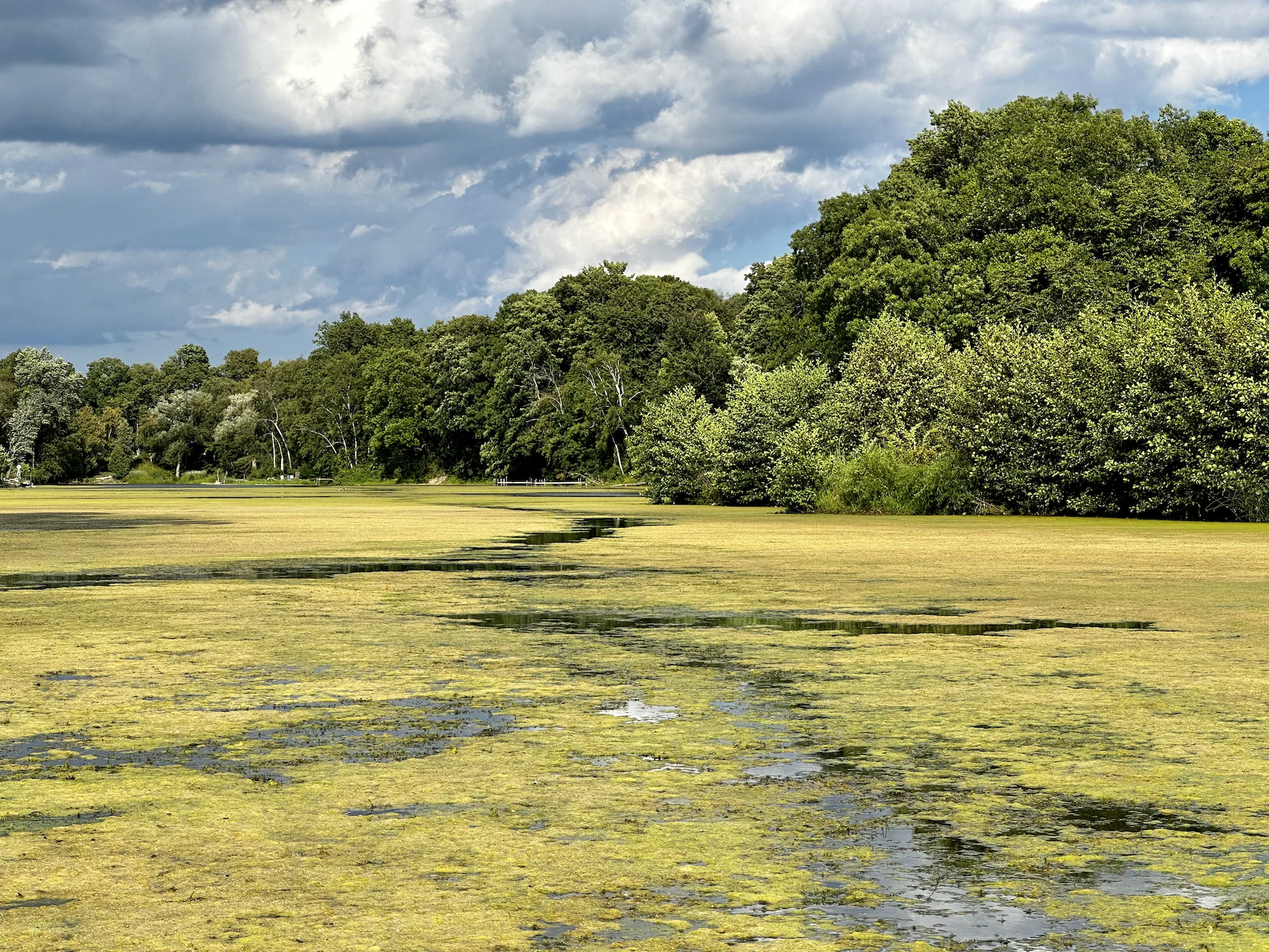
Algae is not only a “catch-all” for unwanted aquatic plants, but it is also often looked at unfavorably by pond owners. For the most part, that would be accurate. Although algae plays a critical role in your pond health, an imbalance can be catastrophic to your overall pond ecosystem.
Benefits of Algae
In general, algae species serve a purpose and are essential for a healthy pond. Planktonic algae is the first link in most food chains that occur in your pond. Zooplankton feed on planktonic algae. Followingly, bait fish and fingerling sport fish feed on the zooplankton. Without a food source, these fish will struggle to thrive in your pond.

Pond owners who are managing their pond for trophy bass production will typically fertilize their ponds to keep the planktonic algae population very high. In addition to providing more food for zooplankton, bait fish, and fingerlings, the extra algae blocks much of the sunlight from reaching the pond bottom. In turn, other unwanted aquatic plants struggle to grow. This decreases the areas for bait fish to hide and gives the bass a much easier meal to come by. This method can be effective, but also risky when managing against some of the harmful aspects of algae abundance.
Problems with Algae
The most frequent complaint about algae is aesthetics. A green pond covered with algae is an eye sore. The enjoyment of the pond or water feature is diminished when algae takes over.
PHOTOSYNTHESIS
During photosynthesis, when plants use sunlight and carbon dioxide to produce food, they give off oxygen. Oxygen is critical for your fish, the decomposition of organic matter, and other processes in your pond. Having an overabundance of algae can cause it to act as a blanket and block sunlight from reaching the bottom of your pond. Without sunlight, aquatic plants cannot undergo photosynthesis.
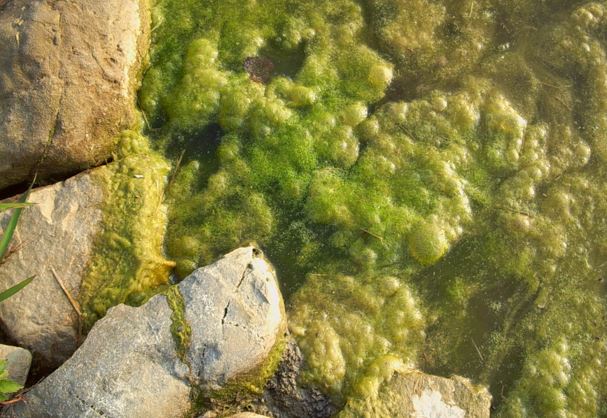
Since photosynthesis only occurs when there is sunlight, when the sun goes down plants turn from oxygen producing organisms to oxygen consuming organisms. Therefore, the more aquatic plants and algae you have in your body of water, the more oxygen they will give off during the day and the more they will consume at night. As the night goes on, the oxygen levels continue to decrease. The lowest level of oxygen will be just before the morning sun. If your pond has too much plant life, the oxygen levels can decrease to the point where large fish may struggle to survive.
ALGAE BLOOMS
An algae bloom is the rapid reproduction and spreading of algae when the conditions are right. They typically occur during the hot, sunny, calm part of summer. When an algae bloom takes place, your pond can be covered with algae in a very short period of time.
The major problem with an algae bloom is the inevitable die off or crash. Frequently, the crash happens even faster than the bloom itself. It can be caused by a cloudy day and lack of sunlight, a cold front, storms, cold rain, or even an over-aggressive chemical treatment in the pond.
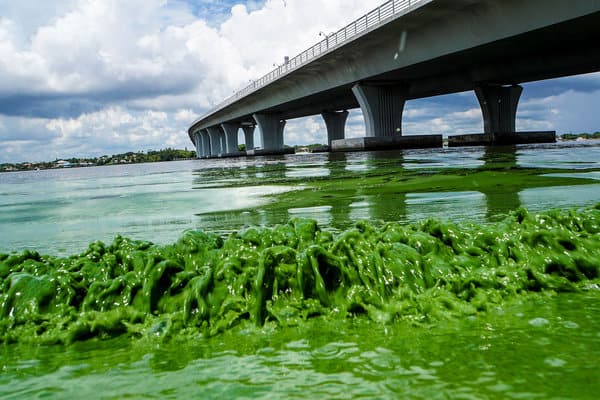
THE AFFECTS OF A CRASH
When the bloom dies off, it adds a large amount of dead organic matter to your pond. This organic matter is decomposed by microorganisms at the pond bottom. The added volume of organic matter causes the total amount of decomposition that occurs to increase. This can be detrimental because the decomposition process uses up oxygen and gives off carbon dioxide and even more harmful gases, such as methane and sulfur compounds.
This causes two problems. First, lack of oxygen. When the oxygen in the pond is used to decompose the dead algae, it is not available for fish and other aquatic life. A crash can be so severe that your pond ecosystem starts to die off due to lack of oxygen. The larger the organism, the more oxygen it uses. Therefore, your larger fish that have been in your pond for several years will be the first to die when oxygen is taken up.
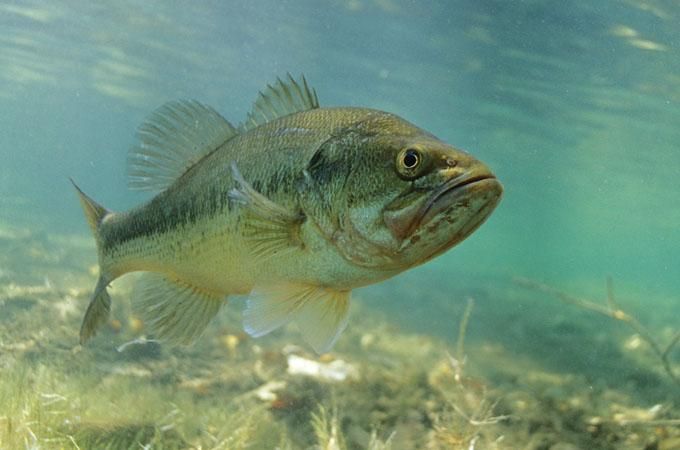
The second problem with a large die off and increased organic matter is nutrients. When the algae die off and are decomposed, the carbon dioxide and nutrients are released back into the pond. The carbon dioxide and nutrients are then readily available for the generation of plant material to begin the cycle all over again.
RED TIDE
In salt water or brackish water areas, Red Tide can occur. Red Tide is a naturally occurring phenomenon that affects brackish and saltwater areas. It is a generic name for a harmful algae bloom. Among the thousands of algae species there are maybe 100 that produce toxins, which can be ingested by filter feeding shellfish. The right mix of ocean conditions, including low salinity, high nutrient levels, warm water, and calm seas, causes algae to grow rapidly. Red Tide often occurs when an extended period of sun follows an extended period of rain.
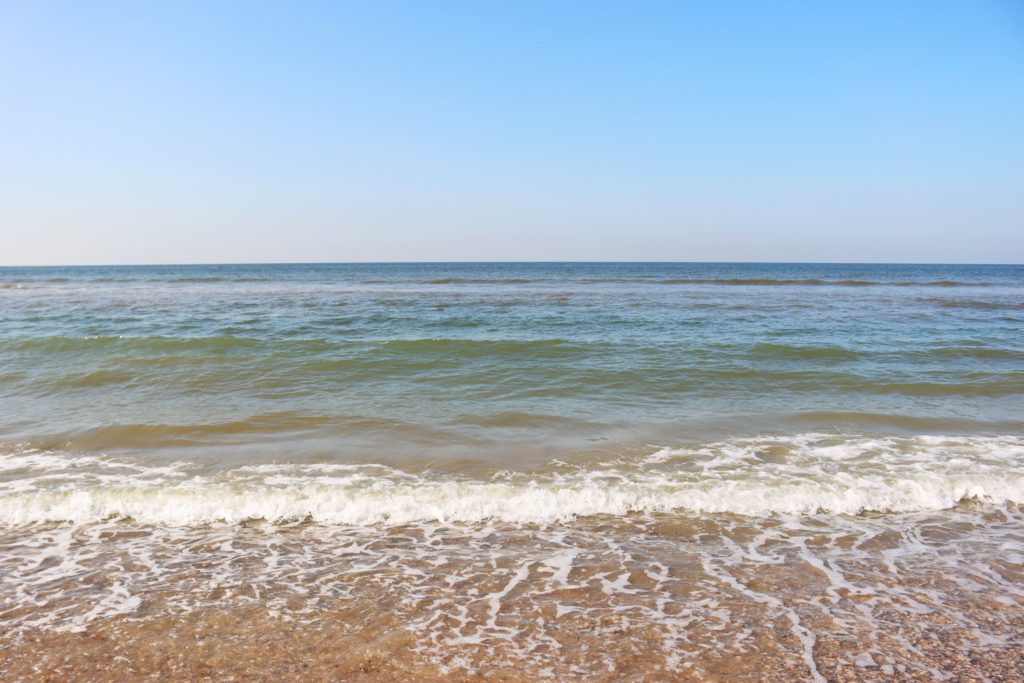
Filter feeding mollusks such as clams, mussels, and oysters are not safe to eat when harvested in waters affected by Red Tide because the toxins can build up in these organisms. This build up is known as bioaccumulation. Organisms that are exposed to more toxins will accumulate more toxins in them, especially in bones and fatty tissues. When the organism is consumed, those toxins that have bioaccumulated are transferred to the organism or person eating it. However, crustaceans such as crabs, lobsters, and shrimp as well as fin fish are safe because they do not accumulate the toxins.
STRATIFICATION
Since excessive algae growth will limit sunlight from penetrating your pond, significant thermal stratification can occur. This refers to the temperature layers throughout the pond. The water that does not receive the sunlight and warmth will remain cooler and denser. This dense water then sinks, and oxygen levels decrease because it is not in contact with the air.
IRRIGATION
Another problem with excessive algae growth is that it can affect irrigation. Many golf courses, farmers, and homeowners use ponds as a holding area for irrigation water. Algae can clog the pump and the filters within it if the pond has an overabundance. In turn, this adds many hours of labor to the project. The algae that passes through the pump will be distributed throughout the lawn or irrigated area. This leaves it unsightly and with foul odors as well.
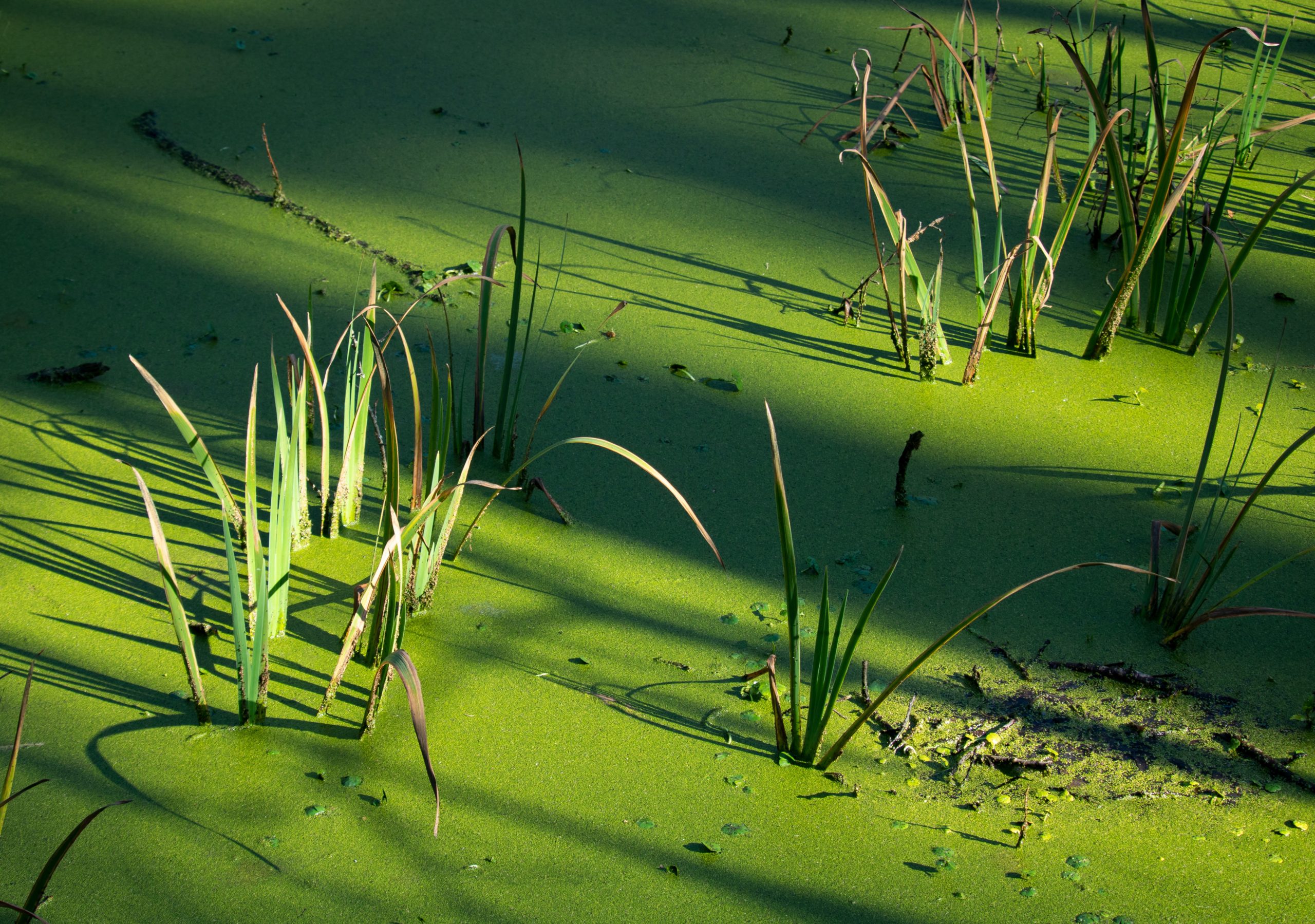
All in all, algae plays a vital role in any pond or lake environment. Without it, you would struggle to raise and maintain a healthy fish population. However, a pond can quickly come out of balance with an overabundance of algae, resulting in several harmful side effects. Regular monitoring and managing of the pond will ensure the best possible outcomes for algae.
If you have any questions, email us or call 715-262-4488.
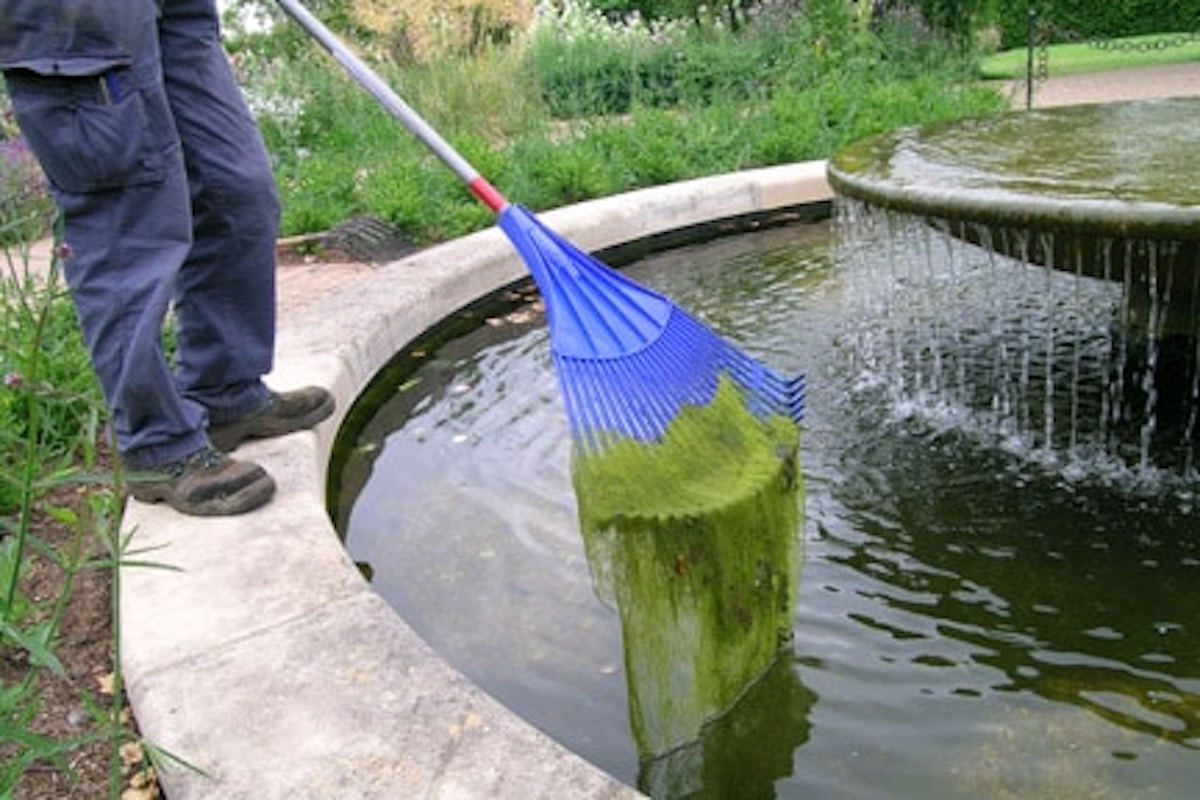 3 Most Common Types of Pond Algae
3 Most Common Types of Pond Algae
 Early Season Algae Control
Early Season Algae Control
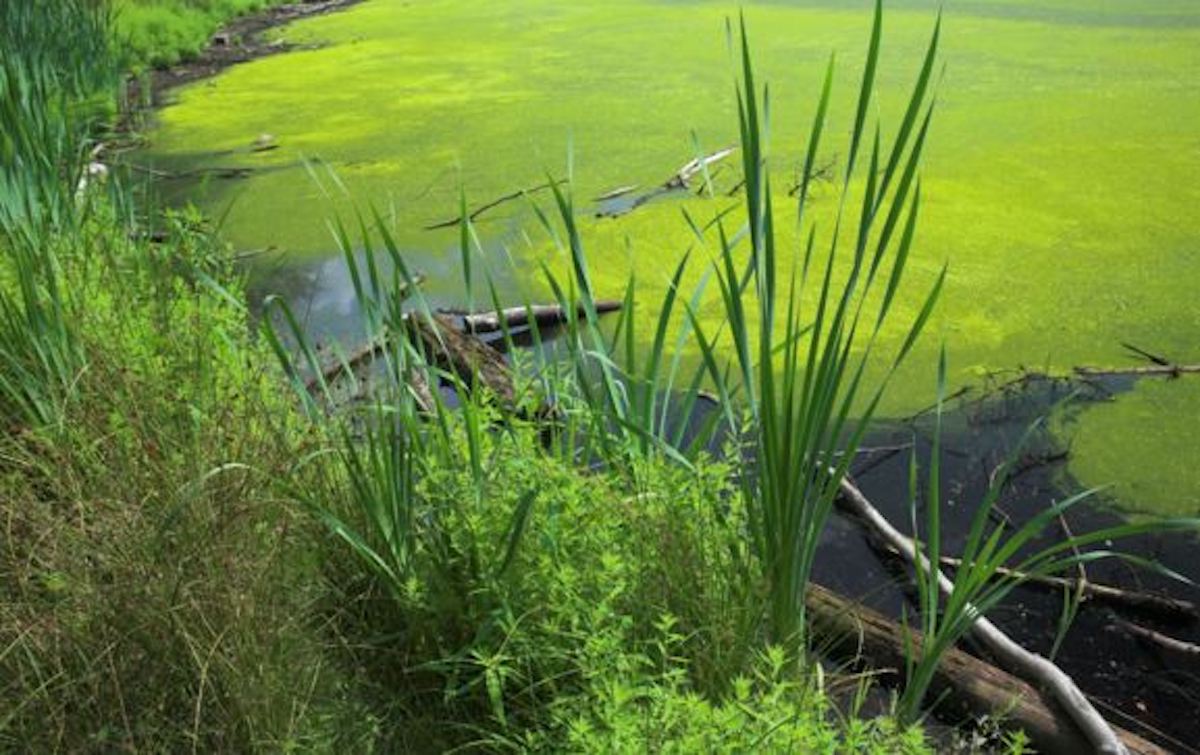 Common Pond Algae Treatments
Common Pond Algae Treatments